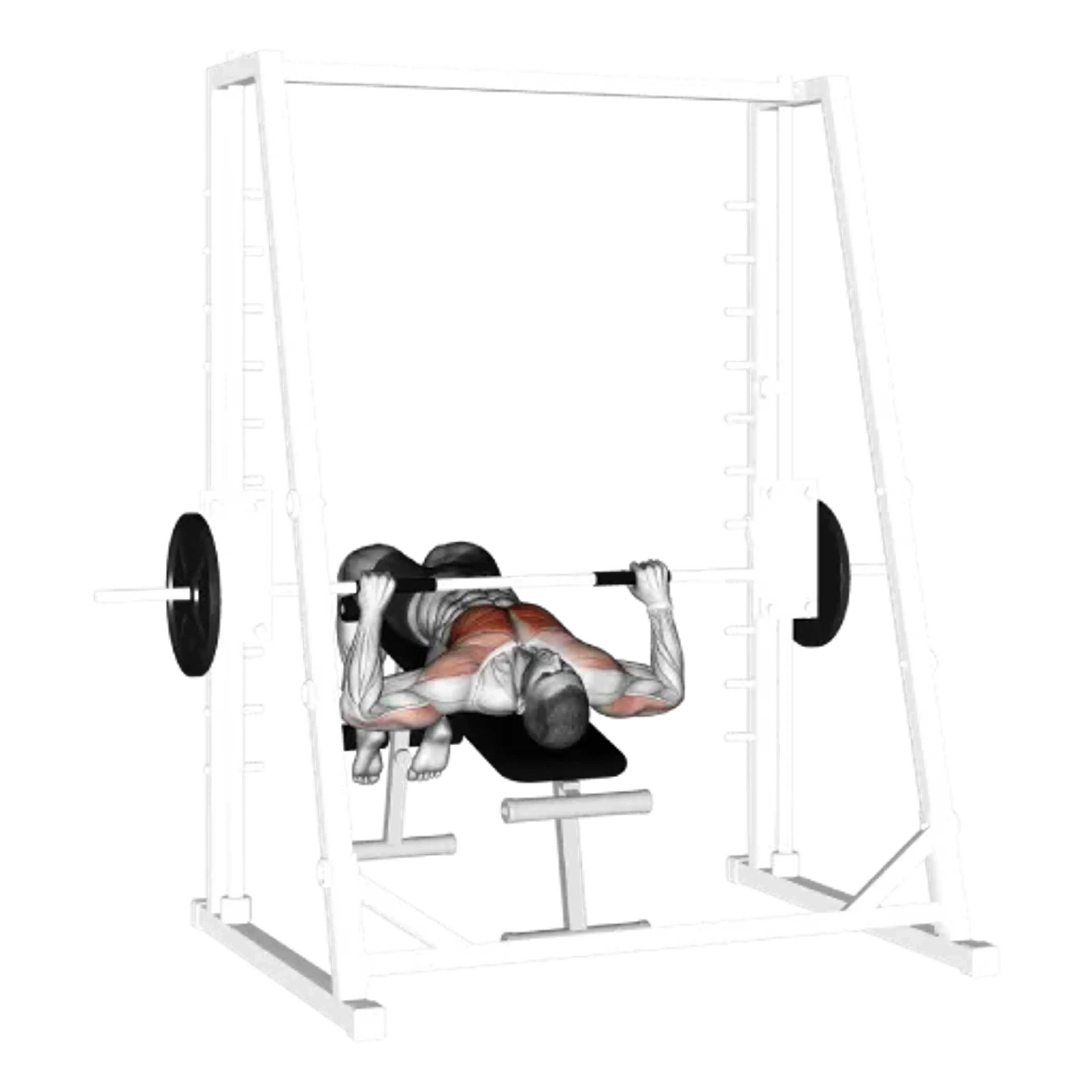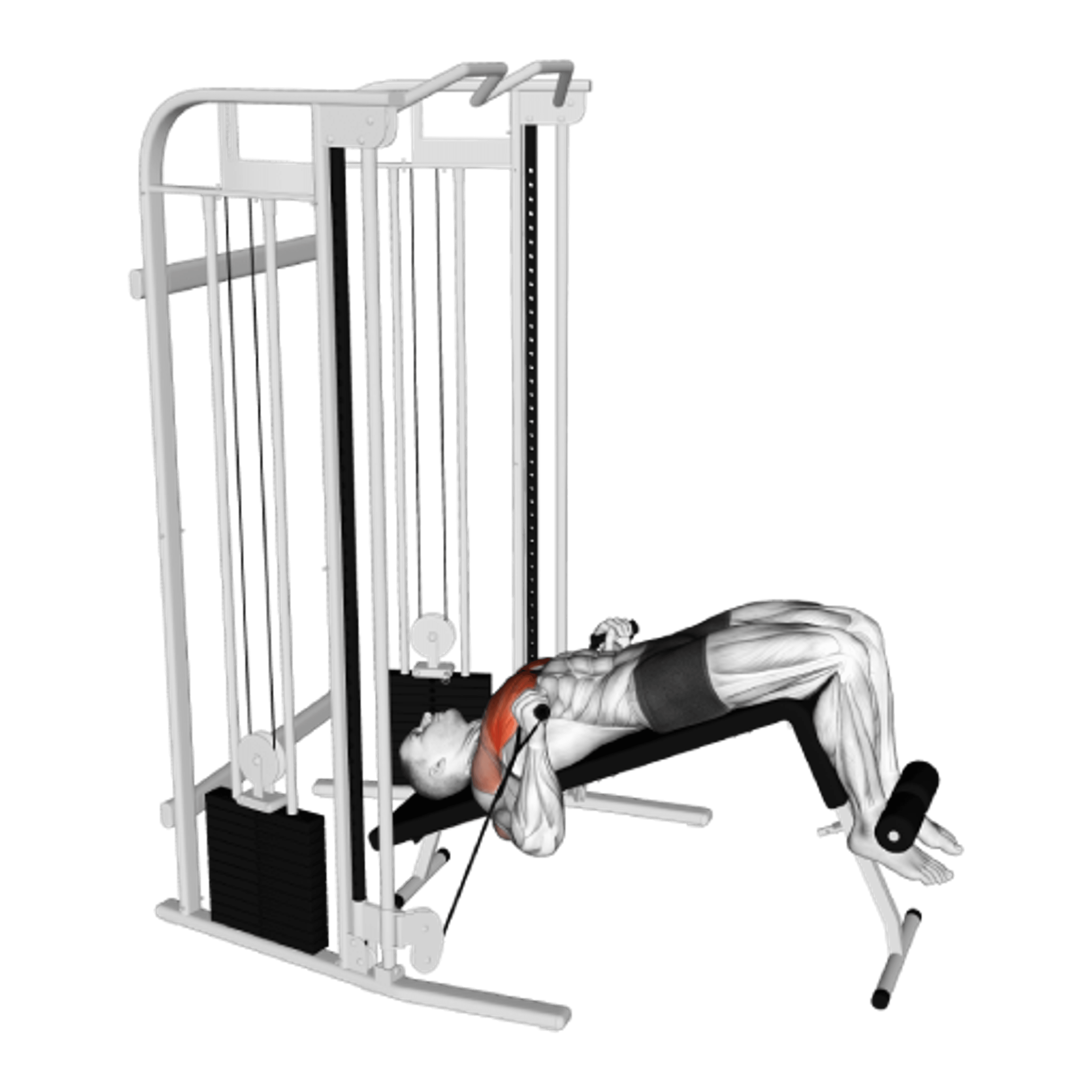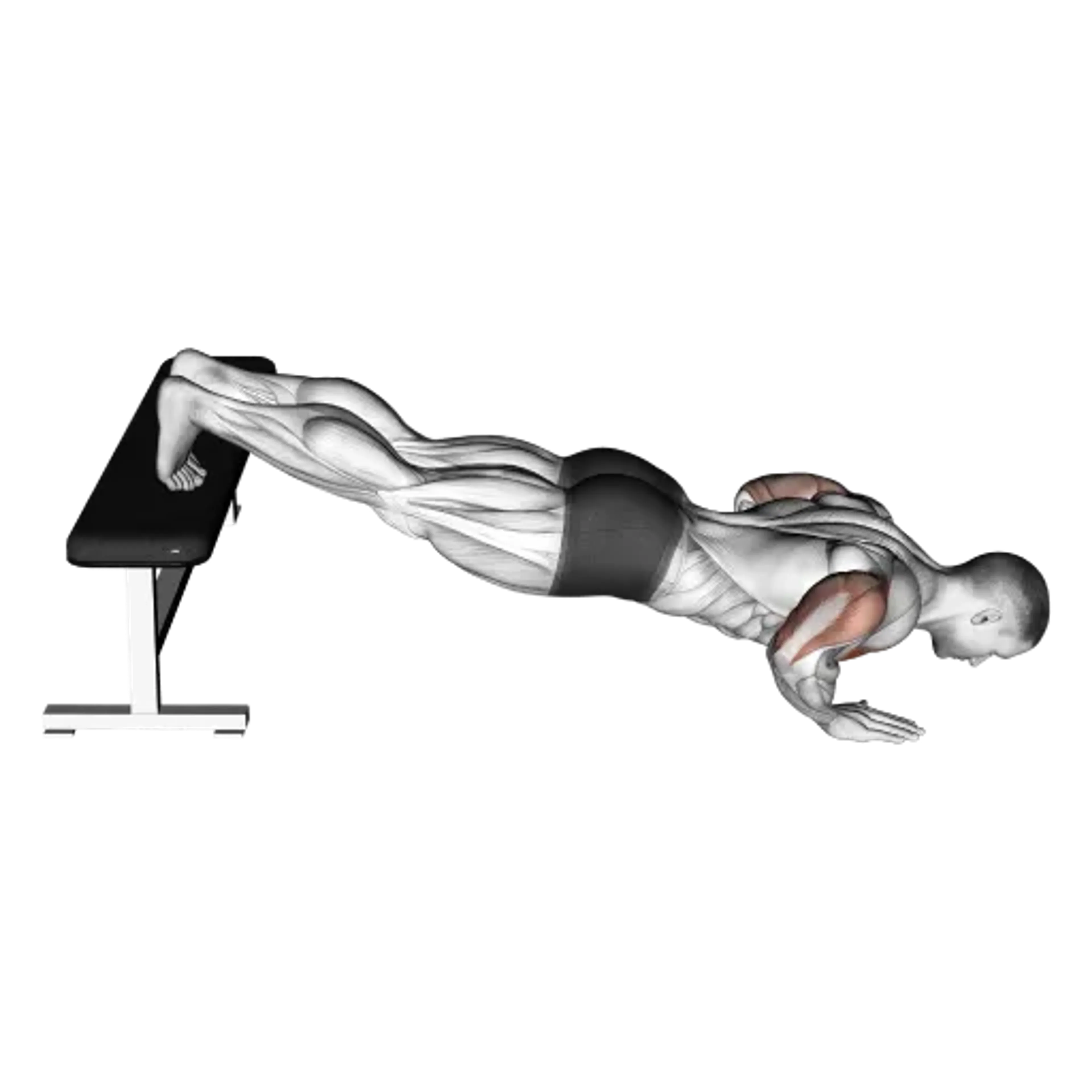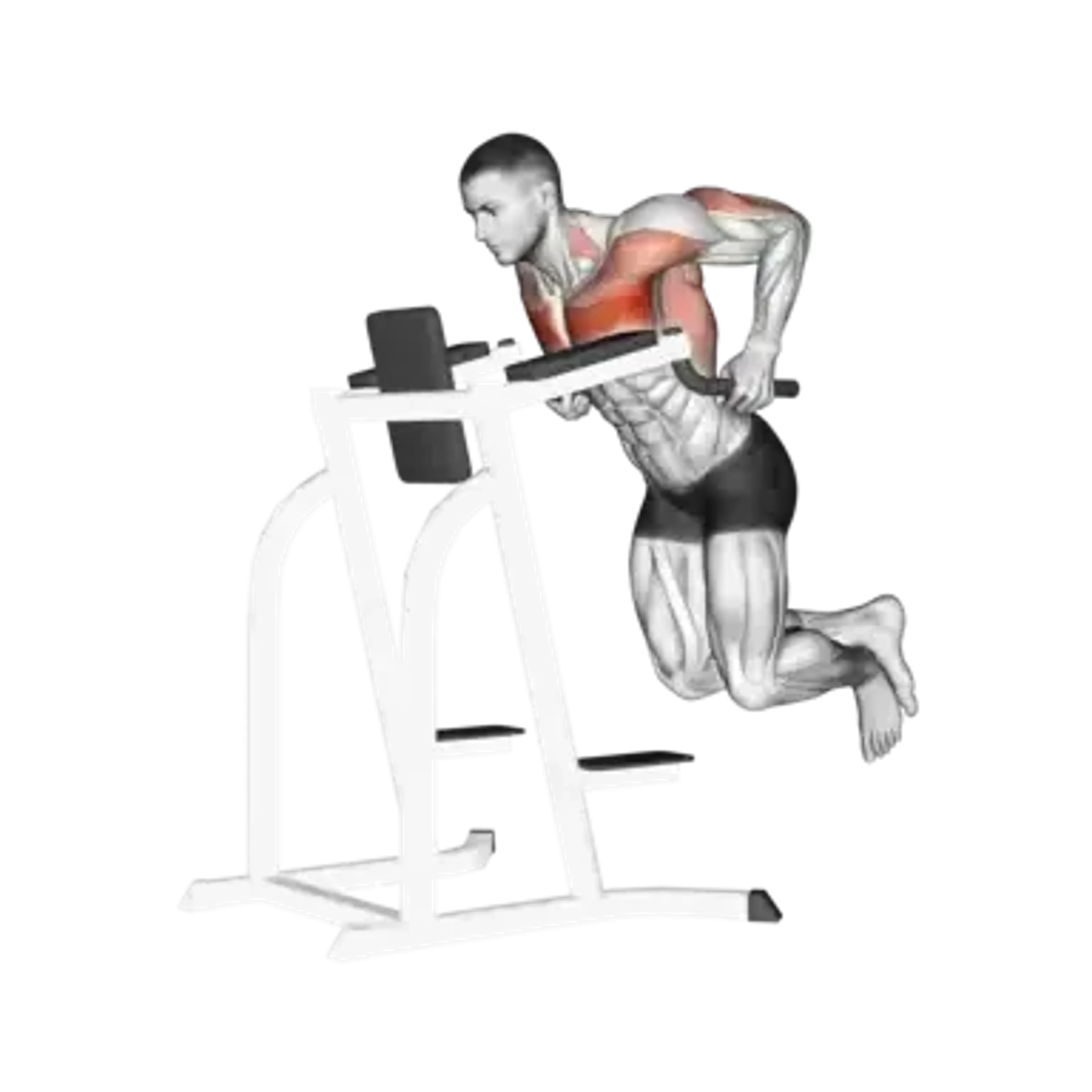Barbell Decline Bench Press (Reverse Grip)
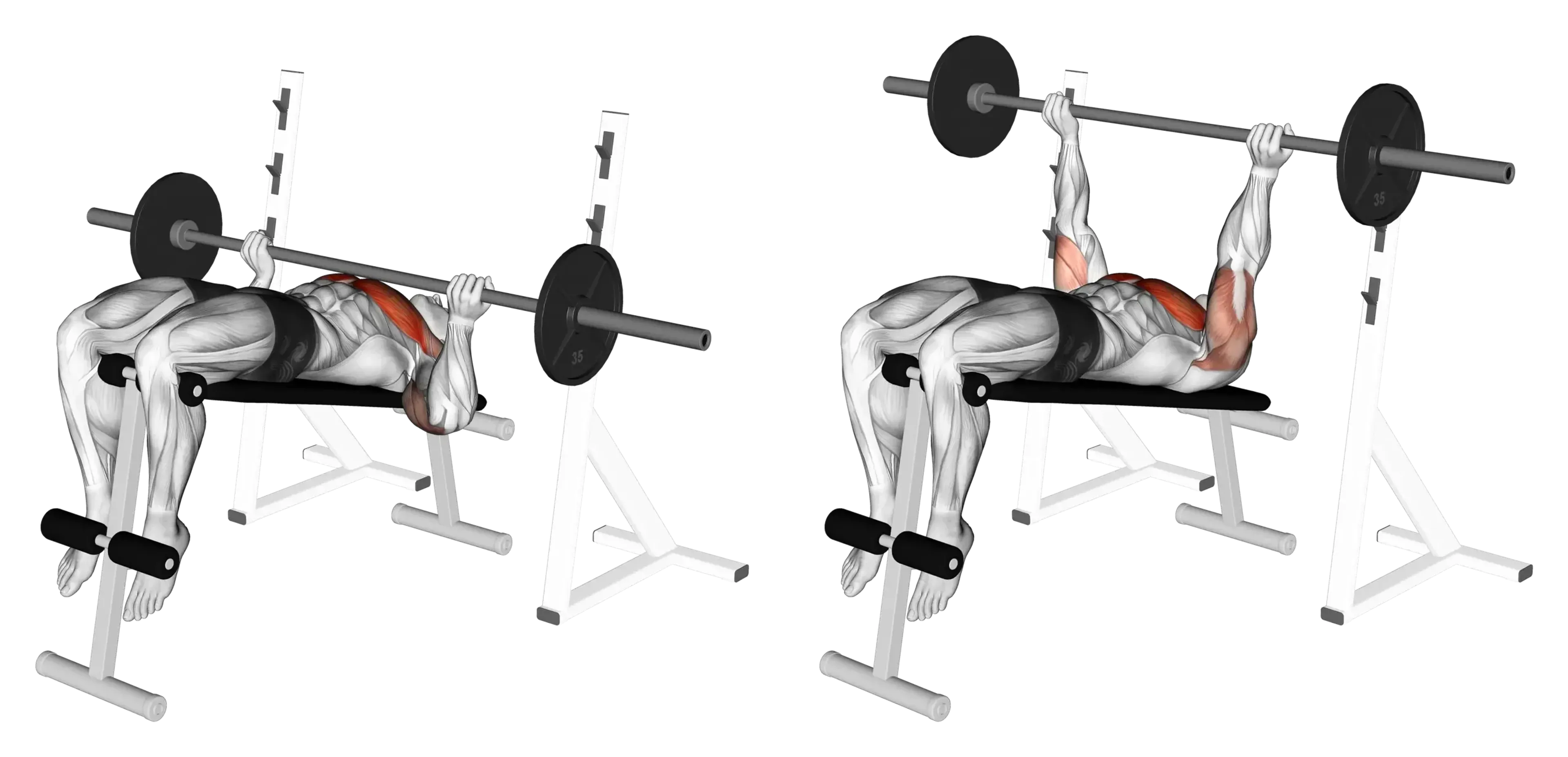
Overview
- Primary Focus:
- Chest.
- Equipment:
- Barbell and bench.
- Difficulty:
- Advanced.
General Information
Barbell Decline Bench Press (Reverse Grip) is a compound exercise that primarily targets the chest and also engages the triceps and front shoulders. It is an advanced-level movement that uses a supinated grip on a decline bench to bias the lower pec fibers while challenging wrist and forearm control.
The reverse grip changes elbow and shoulder mechanics and often reduces shoulder internal rotation, but it increases demands on grip security and bar path precision. Most lifters use moderate loads and a spotter for safety.
Use it selectively as a variation for hypertrophy or to reduce discomfort from pronated pressing. A decline bench with reliable leg hooks and a set rack height improves control during unracking and re-racking.
Muscles Worked
- Pectoralis Major
- Primary
- Triceps Brachii (Long Head)
- High
- Triceps Brachii (Lateral Head)
- Medium
- Triceps Brachii (Medial Head)
- Medium
- Deltoid
- Low
- Serratus Anterior
- Low
Instructions
- Secure your legs on the decline bench, set shoulder blades, and position eyes under the bar with a spotter if available.
- Grip the bar with a firm reverse (supinated) grip slightly wider than shoulder width, keeping wrists stacked and thumbs wrapped securely around the barbell knurling if possible with a secure hold.
- Unrack by extending the elbows with tight lats, then set the bar over the lower chest line before beginning the descent under control.
- Lower to light contact on the lower chest or upper abdomen while keeping elbows close and forearms vertical at the bottom position if shoulder structure allows it comfortably.
- Drive the bar up with steady elbow extension and keep the path back toward the rack, maintaining the reverse grip and shoulder blade position tightly set on the bench pad for control throughout the press.
- Rack carefully by guiding the bar into the hooks with the spotter’s assistance if needed and do not rush the return in a decline position to maintain safety.
Common Mistakes
Injuries
Barbell Decline Bench Press (Reverse Grip) is a high risk exercise when performed with proper technique.
The supinated hold and decline setup increase the need for spotter support and precise control. Use secure grip, conservative loads, and smooth tempo to reduce wrist strain and avoid bar drift.
If pain or instability occurs, switch to a flat or incline reverse variation or to neutral grip dumbbell pressing. Stop immediately if you feel slipping, sharp pain, or loss of bar path control.
Alternative Exercises

Frequently Asked Questions
- Q: Do I need a spotter for reverse grip decline?
A spotter is strongly recommended due to rack angle and grip orientation. If training solo, keep loads conservative and use safety stops where possible.
- Q: What grip width works best?
Slightly wider than shoulder width is common. Choose a width that keeps forearms vertical at the bottom and wrists stacked without discomfort.
- Q: Is reverse grip easier on shoulders?
Some lifters find the supinated position more comfortable. Start light and assess how your shoulders respond before progressing load on decline.
- Q: How low should I touch the bar?
Aim for the lower chest or upper abdomen based on your arm length and bench angle. Maintain control and a predictable touch point each rep.
Overview
- Primary Focus:
- Chest.
- Equipment:
- Barbell and bench.
- Difficulty:
- Advanced.

